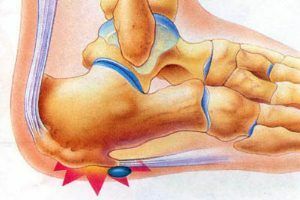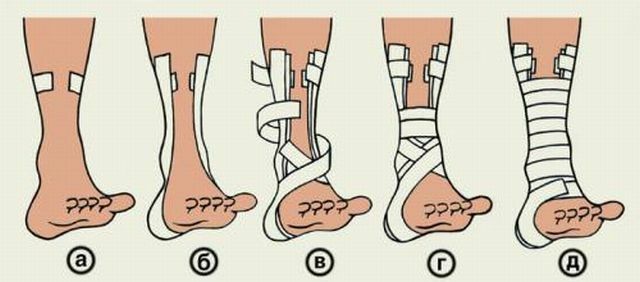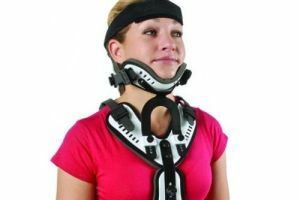 To understand the exact location and topography of the neck, you need to imagine a few lines.
To understand the exact location and topography of the neck, you need to imagine a few lines.
The upper edge of the neck is located on the conditional line, which runs along the lower edge of the lower jaw and the external occipital protrusion. The lower edge of the neck passes along the upper part of the clavicle and along the line that connects the acromion with the spinous process of the 7th cervical vertebra.
Most often, the neck has a cylindrical shape, but as a result of intense stress and systematic exercise, or because of a shortage of food and disease, the form may change.
The cervical spine has a large network of blood vessels and nerves.
Through the neck there are two "supply channels" of the body - the esophagus and trachea, which provide the body with food and air.
The base of the neck is seven vertebrae of the cervical spine. It is thanks to the cervical vertebrae that this part of the body is very mobile.
Contents of the article
- Any neck injury is very dangerous!
- The causes of the injury are common
- The nature of the clinical picture
- The diagnosis of
- First aid is a step towards the overall success
- Therapy in the medical institution
- Recovery
- Complications and disability
- Preventive measures
Any neck injury is very dangerous!
A neck fracture is a serious injury. It is caused by a violation of the integrity of one of the seven or more cervical spine vertebrae.
Most often, fracture of the cervical vertebra is caused by a sharp blow or compression of this part of the body.
Doctors distinguish several types of fractures of the cervical vertebrae, depending on localization.
There are names for each of the fractures: 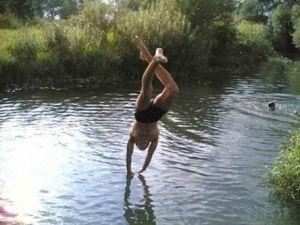
- fracture of 1 vertebra, called an atlas, is called a Jefferson fracture;
- fracture of 2 cervical vertebrae called epistrophe is called "hamstring injury";
- injury in the area of 3-5 vertebra - a diver's injury;
- fracture of the last two vertebrae of the cervical region - trauma of the excavator.
Depending on the degree of complexity of the fracture, the consequences caused by a fracture, the terms of rehabilitation distinguish complicated and simple fractures.
Damage to the upper vertebrae of the cervical spine from the shock is caused by the absence of a cartilaginous lining that would play the role of a shock absorber. The bones of the skull, crashing into the vertebra, destroy it.
There are three degrees of fracture of the second cervical vertebra:
- first ( soft);
- second ( possible loss of consciousness, impaired sensitivity);
- the third ( as a rule, causes a lethal outcome).
Fractures of the lower vertebrae, caused by sharp bending, are most often compression. To imagine what it's like to imagine the effect of the press. The applied force squeezes the vertebrae, they strongly contract and collapse( break, crack).
Causes of trauma - banal
As it was said above, the neck fracture arises from a strong impact or compression, pressure on it. Such processes most often occur:
- During the accident, the driver and passengers of the vehicle suffer very large overloads, caused by an instant decrease in speed to almost 0 km / h. Even the seat-secured body is not protected from neck injuries, which in this case are caused by tipping the head back or forth( depending on the direction of the applied force).In such cases, the fracture often coincides with the whiplash injury of the neck.
- When falling from a height and falling heavy objects on the head or neck of the , a large mass, combined with speed, becomes deadly. The occipital bone is pressed against the vertebrae and breaks its arcs. This is called a fractured fracture.
- Bathers , diving in unfamiliar places, there is a risk of a fracture of the lower cervical vertebrae. If the depth at the diving site is not large enough, the person bumps his head against the bottom. The neck thus strongly bends. A sharp forced flexion causes a compression fracture of the cervical vertebrae.
Nature of the clinical picture
 Traditional symptoms for all neck fractures are pain in the injured part of the body.
Traditional symptoms for all neck fractures are pain in the injured part of the body.
Neck is a more "tender" part of the body. In addition, it hides in itself the vital arteries of blood vessels, nerves, respiratory tract. Therefore, the pain in the neck is worth listening more closely.
At the turn of the atlant, severe pains spread not only around the neck, but also on the back of the head and the head.
With a fracture of the second vertebra, discomfort begins when you try to turn your head to the side. There may be neurological disorders - numbness or paralysis.
When a third vertebra is injured, there is pain and limited movement in the head.
Almost always the companion of the fracture is muscle damage. Muscles can be swollen, tense. In the area of injury, the skin can change its color. There are chances of breathing difficulties, irregular heartbeat, headaches and dizziness.
With a fracture of the vertebrae of the cervical head movement cause severe discomfort.
Diagnosis of
You can diagnose the fracture by examining and examining the patient. Then confirm the assumptions by X-ray. 
On a dark background of a picture bright areas through which gamma-rays have not passed are looked through. This is the tissue of the vertebrae.
An experienced physician determines at a glance the deformation and pathological location of a particular fragment or site.
With a fracture of the atlas - the first vertebra, a special method of obtaining a snapshot is used. X-rays are done through the mouth. In addition, the possibilities of magnetic resonance imaging are used.
First aid - step to the overall success of
Treatment always begins with first aid to the victim.
 It is necessary to evaluate its condition and the situation in which the injury is received, suggest the possibility of neck damage.
It is necessary to evaluate its condition and the situation in which the injury is received, suggest the possibility of neck damage.
Carefully put the injured on a flat hard surface and fix the damaged part of the body, protect it from unnecessary movements, which can aggravate the situation and the condition of the injured.
After fixing the dressing or tire, call a doctor or an ambulance.
Therapy in a medical institution
After diagnosis in a medical institution, it is necessary to start treatment.
Neck injuries require a careful and careful approach to their treatment, since the consequences after fracture of any cervical vertebra may be the saddest. The recovery period is long. 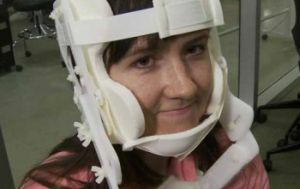
The main method of treatment is immobilization, complete rest of the injured part. On the neck impose a special collar of Shantz or a bandage that supports her in a permanently immovable position.
They wear such a collar for two or three months. In case of a severe fracture in order to prevent damage to the spinal cord, the patient is placed in special Glisson loops and stretched out the neck and then fixed with a collar.
For fractures with fragmentation or compression fractures, surgery is performed. The doctor "collects" the destroyed vertebra, puts it in place and fixes it. Operations are under general anesthesia.
Recovery
Long-term physical therapy, exercises and exercises for months can put on the victim's feet.
Also used therapeutic massage. But the positive outcome of treatment is not always guaranteed.
Complications and disability
In addition to destruction of the bone tissue of the vertebrae, a neck fracture is fraught with such consequences:
- paralysis of the body;
- breathing disorder;
- heart failure;
- spinal cord injury.
Paralysis is considered a critical complication, but, unfortunately, this is a fairly frequent consequence after a neck fracture.
Paralysis has a significant effect on the patient's social and social connections, disrupting the routine.
With due care in the early stages, such an outcome is unlikely, but possible. Only support of relatives and creation of comfortable conditions will help the victim not to despair.
Damage to the spinal cord is a very dangerous consequence of trauma. Loss of sensitivity can lead to new injuries,  which the patient will not feel - cuts, burns, etc. You should regularly examine yourself and your body for such damage.
which the patient will not feel - cuts, burns, etc. You should regularly examine yourself and your body for such damage.
In special cases, after carrying out medical and social research, a person with a neck injury can be considered an invalid. Basically, this condition is caused by violations of the statodynamic( motor) function.
Constant neck pain, giving up in the upper limbs, weakness, restrictions in the movement of the neck - the main clinical manifestations of violations, based on which you can qualify for a disability group.
Preventive measures
Prevention of neck injuries can be regular exercise and exercise. Bubnovsky's gymnastics for the neck is popular.
Systematic exercises will lead to strengthening of the muscles of the body. Muscles, in turn, will firmly hold in the natural position limbs and head, even with accidents, bumps, falls.
In addition to exercises, you can advise to adjust the diet, full of nutrients, vitamins and macro- and microelements. And, thirdly, the prevention of injuries includes a careful care for your body.
If you do not expose yourself to danger, be considerate and judicious, then the risk of injury is minimal. And in a complex with the above-mentioned methods to be reduced to zero.


